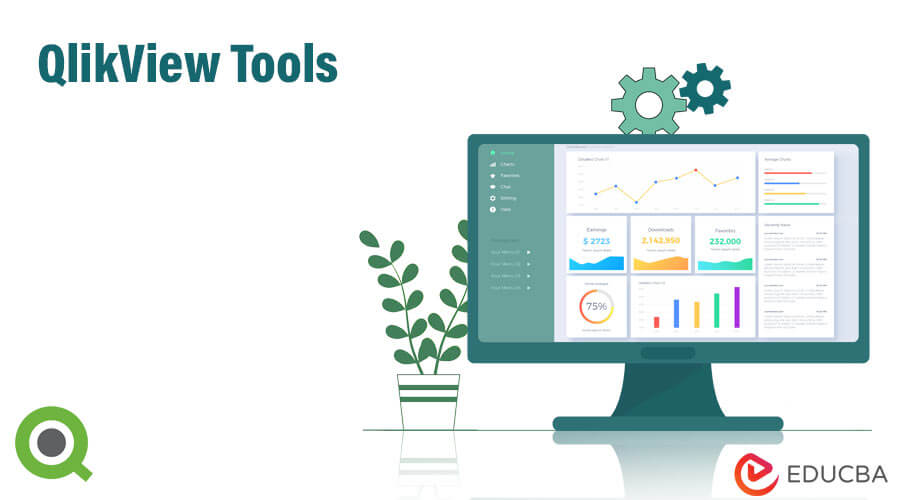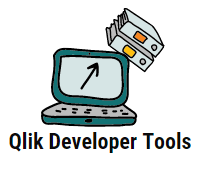Updated July 1, 2023

Introduction to QlikView Tools
QlikView is a powerful business intelligence tool designed for data visualization, report generation, and in-memory data processing. QlikView tools offer advanced analytical capabilities, providing deep insights into data sources and allowing the integration of various data sets, including relational and flat files.
One can utilize QlikView in mobile applications to access Qlik documents. Furthermore, QlikView is user-friendly and requires no special skills to operate, making it a popular choice for monitoring business processes and operations in various departments such as marketing, sales, and human resources. The tool supports ODBC connectivity, which allows users to access numerous data sources.
Different QlikView Tools
The following are the various QlikView tools available:
1. Qlik Power Tools
Qlik Power Tools are a collection of small software programs that provide additional functionalities to QlikView. These tools are primarily used for troubleshooting purposes and are not official Qlik products, i.e., they come without a warranty. There are different types of QlikView power tools available, each serving a specific purpose:
a. SharedFile Viewer:
This QlikView Power tool provides facilities to repair large shared files and legacy files. It allows users to view server objects and other files in the Qlik server repositories. This tool also supports viewing the content of binary shared files to repair the loaded files on it.
b. Qv Server Object Connector:
Server objects are available when working with documents on the Qlik server. This tool is a customized data connector to load data from shared files to a document for analysis.
c. QlikView Server Agent:
This tool helps in managing server services more elegantly on many servers at multiple sites from a single location. It is easy to use and manages stopping and starting services at a time.
d. QlikView Server Super-Agent:
It is a powerful tool that is free of charge and acts as a monitoring tool for the QlikView server. It allows users to perform hands-on exercises with data structures and activate the user by sampling a test on every function based on call-based usage of data from the QMS API.
e. QMS API Client:
QMS API Client is an API that allows users to interact with QMS API functions on the QlikView server without needing to write code. It lets users work with data structures and test each function by making calls to the QMS API.
f. Qv User Manager:
This tool prompts the CALs process by assigning and removing CALs used in CSV format. In other words, it helps to clear documents that were not used in recent days and monitors the QLik server remotely.
g. QvsDetector:
This tool tests the QVS machine and helps in detecting QVS from the server on the same network. It helps to fix issues in the customer environment by detecting QVS with the same credentials.
h. Server Object Handler:
This tool takes responsibility for monitoring and administrating server objects in documents that are located remotely. It also enables the ownership changing process on a selected degree of server objects.
i. Schedule Migration Tool:
It outlines how to remove old work from a distributed service process by having issues in the Publisher service after an upgrade. It is the responsibility of QlikView administrators who consider migrating from version 9 to 11/10. Since shared storage is not used, it is recommended to run the service with domain service.
j. Shared File Repair:
This command-line tool is preferably used as a cleaning tool. It helps in defragmenting a shared file to decrease its size. It provides a GUI to perform repair functions on more shared files.
k. Server Object Handler Batch:
This tool performs an object handler function on the batch script.
l. XMLDBsviewer:
This tool identifies users and groups in Qlikview and permits searching and editing tasks in the QlikView Publisher Repository database in XML format.
2. Qlik Developer Tools
Qlik Developer Tools are designed to help developers explore the resources built by connecting to other developers and within the Qlik Sense desktop. The developer tool view can be accessed to link multiple data information in QlikView. The various developer tools available are:
a. Qviewer:
A paid tool used to view QVD file contents in a tabular form and named as one of the top apps. It helps manage and validate data or schemas.
b. QlikView Document Analyzer:
This tool analyzes the QlikView document to extract metadata. Users can efficiently view document views in several aspects and monitor their document using this analyzer tool.
c. QVSource:
This tool helps gather data from various sources using Qlik web connectors. It can connect to XML, spreadsheets, ODBC, or real-time data sources.
d. NPrinting:
It is a reporting mechanism that generates reports and distributes them to users via email for publishing.
e. TortoiseSVN:
A free software tool that controls source code and manages project creation on a Qlik application.
f. SnagIT:
This tool has built-in program software to read screen recording and screen capture. Users can edit, share, and organize the visuals to grab user attention.
g. Notepad ++:
This tool is popular for its text editing tool and uses Qlik Language definitions. They are the read-me file with basic instructions.
h. Screenshots:
This is a popular tool for taking screenshots of selected regions.
i. Mapping tools:
This tool maps GIS locations and provides sufficient points on the maps.
j. Perfmon:
This tool is used for performance monitoring and explains configurations. It monitors CPU, speed, network performance, bandwidth, and the processor’s clock counters.
k. RightQlik:
This tool helps add a context menu by clicking the QVW file.
Conclusion
QlikView tool stands out due to its visual analytics features, making dashboards visually appealing to users. Furthermore, it has robust client-server communication owing to the QlikView server in the backend system. QlikView is considered to be the business intelligence tool of the future.
Recommended Articles
Here are some further articles for expanding understanding:


